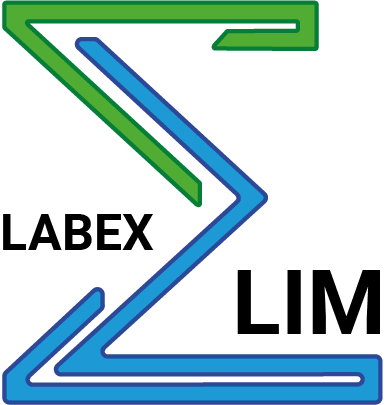Bringing a new light on photonics
Develop new bulk glasses, vitroceramics and transparent polycrystalline ceramic materials dedicated to laser frequency conversion, infrared sources and amplifiers in the NIR/MIR and new optical fibers through a better control of both the guided material itself and its structuration/architecture.
![]()
Based on the complementarity between a basic research on materials (IRCER) and applied research on components for optics, with the development of laser sources and the demonstration of new applications (XLIM), the flagship focuses its research on manufacturing processes as well as new formulations with the potential to revolutionize the world of optical components dedicated to light sources. Numerous applications are targeted in the spectral domain range from the ultraviolet to the far infrared: namely optical micro-spectroscopy (screening and identification of bacteria, chemical agents, vibrational mapping of cells and tissues) and hyperspectral imaging by LIDAR.
Thus, based on the previous outcomes of the phase 1 of the LABEX, the aim of the project is to address two main challenges: the first challenge concerns the development of new bulk glasses, vitroceramics and transparent polycrystalline ceramic materials dedicated to laser frequency conversion, infrared sources and amplifiers in the NIR/MIR. The second one explores unique developments in the field of optical fibers through a better control of both the guided material itself and its structuration/architecture.
The first objective is to develop new transparent polycrystalline ceramics dedicated to infrared sources and amplifiers at 1 μm and beyond. Concerning the development of new transparent polycrystalline ceramics, emphasis is put on the study of each step of the manufacturing process (powder synthesis, shaping and sintering) for new compositions, essentially the family of garnets A3B5O12 (A = Y, Gd, Lu, etc. et B = Al, Sc, Ga, etc.) and sesquioxides doped with transition metals or rare-earth (RE) ions, and on the use of new shaping processes (e.g. 3D additive manufacturing) to manufacture complex and/or optimized architectures. In particular, ceramic matrix with high thermal shock resistance and good laser efficiency like RE: Lu2O3, RE: YAG are of high interest for high peak power/energy lasers (10-100 mJ class) in the mid-IR operation (suitable luminescent ions: Tm, Ho, Er).
A second objective of this challenge is focused on the elaboration of new glassy and vitroceramics compositions of heavy-metal oxides and oxyfluorides (tellurite materials – based on TeO2). Such family of materials displays remarkable nonlinear optical properties (with applications oriented towards frequency conversion). Besides, the fabrication of new transparent tellurite ceramics via the full and congruent crystallization starting from the parent glass, and of new transparent tellurate ceramics (structures deriving from TeO3), corresponds to emerging activities within this flagship. Finally, more fundamental research aspects, combining experience and simulation at the atomic scale, are also tackled and focus in particular on the fine analysis of the structure of heavy-metal oxide glasses, to better understand and control the specific optical properties of these materials.
The simultaneous control of photonic materials and guides should lead to future technological breakthroughs (power amplification, generation of mono-/polychromatic infrared wavelength, functionalization of optical fibers).
Both the demand for higher power fiber laser sources operating in the multi-kW domain and the use of high-efficiency green processes constitute huge challenges for industry 4.0 (for machining or additive manufacturing, medicine, detecting pollutants or hazardous materials).
At the same time, the diversification of emission wavelength remains a major issue, particularly towards UVX or the mid-infrared. In this context, the development of ceramic/viroceramic core fibers is then a promising way. Optical fibers made of heavy-metal oxide glasses (e.g. tellurites) have already been produced by powder processes and may also constitute very good bases for such objectives. Finally, the use of specific vitreous or ceramic coatings on the surface or within micro-structured fibers leads to the exaltation of certain properties (reinforcement of the mechanical strength, improvement of the guiding properties…).
Members
About 39 permanent members of IRCER and XLIM are partially or fully involved in this flagship.
Activities
- Materials for laser and non-linear applications,
- New materials and processes for optical fibers.

